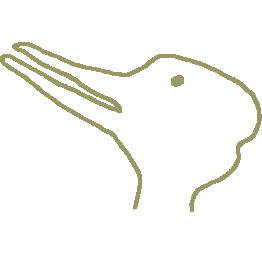Blunderov
Archon
    
Gender: 
Posts: 3160
Reputation: 8.29
Rate Blunderov

"We think in generalities, we live in details"
  
|
 |
RE: virus: Gravity Probe B to be launched
« on: 2004-04-13 07:15:08 » |
 |
[Blunderov]
This from the New York Times.
Best Regards
<q>
After 45 Years (and $700 Million), a Gravity Experiment Takes Flight
By DENNIS OVERBYE
Published: April 13, 2004
ven its critics admit that it was a great idea in 1959.
It was then that three Stanford scientists, dangling their legs in a
university swimming pool, agreed to team up on an ambitious effort to
peer deep into the heart of the strangeness that is Albert Einstein's
legacy.
Advertisement
Now 45 years and $700 million later, their dream has materialized as a
van-size assemblage of plumbing, electronics and quartz, known
unpoetically as Gravity Probe B, sitting atop a rocket at Vandenberg Air
Force Base in California. It is to be launched into orbit next Monday on
an 18-month mission.
When it goes up, the gravity probe will take with it the hearts of
generations of scientists and engineers at Stanford and Lockheed Martin.
Over the years, nearly 100 Ph.D.'s have been awarded at Stanford and
elsewhere for work on the project. In pursuit of their goal, the
engineers have built the roundest balls ever made and the largest
thermos bottle ever to have been flown in space.
Beset by technical problems, glitches, ambitious goals, politics and
management failures, the gravity probe has also been canceled again and
again. How many times depends on "what you mean by canceled," said Dr.
C. W. Francis Everitt, a Stanford physicist who joined the project in
1962 and is now its leader. "Seven is a good number," he added.
The experiment is organized to test one of the most esoteric predictions
of Einstein's theory of gravity, the general theory of relativity, which
predicted the expansion of the universe and the existence of
light-swallowing black holes. The probe contains four gyroscopes to
measure whether and how the spinning Earth twists space-time around
itself like leaves in a tornado.
The answers, say Dr. Everitt, his colleagues and the National
Aeronautics and Space Administration, will give physicists precise
measurements on ways that matter warps space-time to produce the effect
called gravity, allow them to calibrate the black hole dynamos that
produce the monstrous energies of quasars, and perhaps find evidence of
new forces in the universe.
"If it performs as well as we think, it will end up testing Einstein's
theory 10 to 100 times better than any previous test," Dr. Everitt said.
Dr. Brad Parkinson, a Stanford engineer who is a project co-leader,
called it "a testimony of perseverance at the least," in a recent NASA
news conference.
But as the Stanford team heads for the finish line, other scientists say
the ribbon has long been cut. Barring a surprise, they say, no new
physics will come out of the gyroscope experiment. Increasingly precise
observations of satellites, the Moon, planets and other bodies over the
decades have already concluded that general relativity is correct, at
least to the limits of the Stanford experiment's expected precision.
Dr. Kenneth Nordtvedt, a retired physics professor and relativity expert
at Montana State University, said of the experiment: "When it was
conceived, it could have added to our knowledge of gravity.
"Time passed it by."
Still, Dr. Kip Thorne, a physicist at the California Institute of
Technology who is not part of the team, said that although there was no
compelling reason to expect the probe's results to deviate from
relativity, it was important to make a direct measurement that was free
of astronomical uncertainties or theoretical frameworks.
If general relativity fails - as most theorists believe it ultimately
must - it is likely to fail in some surprising way, he said.
Any deviation from general relativity would be "a profound result," Dr.
Thorne said. But even if it agrees, he said, the measurement will be a
landmark, in the books for years, "a significant legacy for future
generations."
In for the Long Haul
The inspiration for the gravity experiment goes back to the 19th century
and the Austrian physicist and philosopher Ernst Mach. He declared that
all motion was relative, and speculated that therefore the inertia of
any given object in the universe was somehow determined by its relation
to everything else in the universe.
</q>
---
To unsubscribe from the Virus list go to <http://www.lucifer.com/cgi-bin/virus-l>
|




